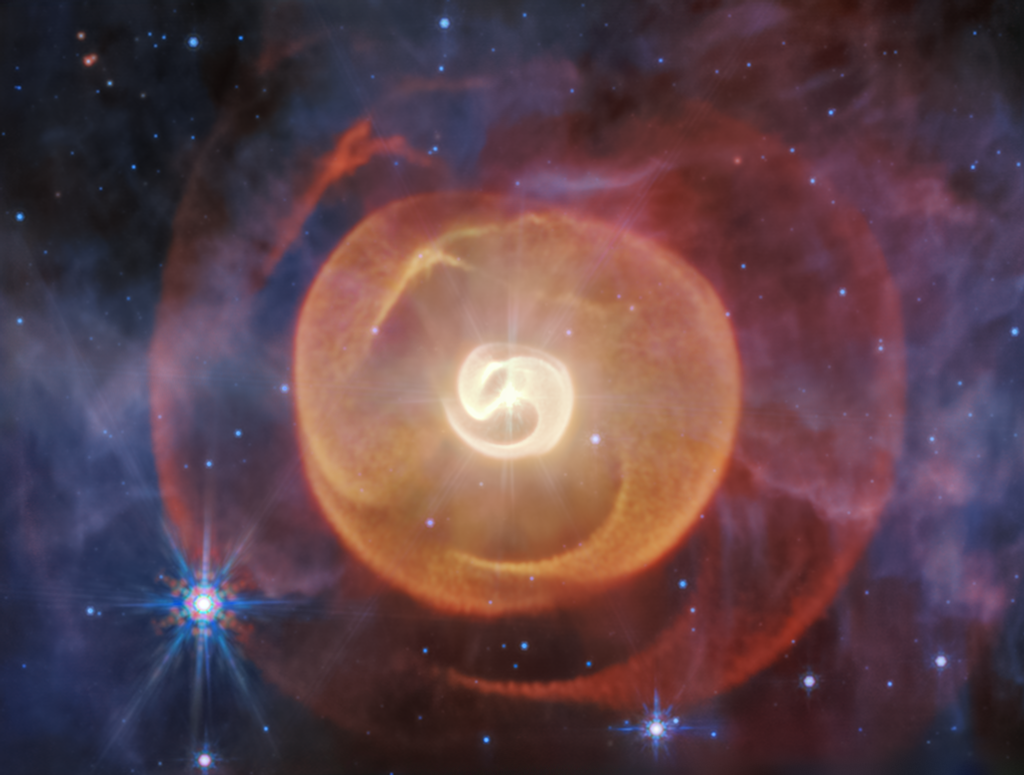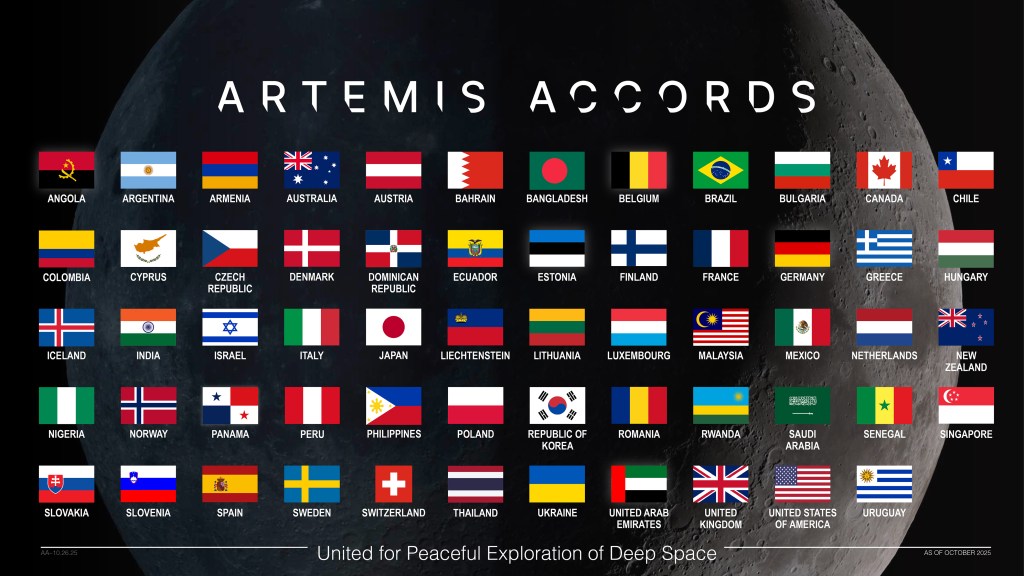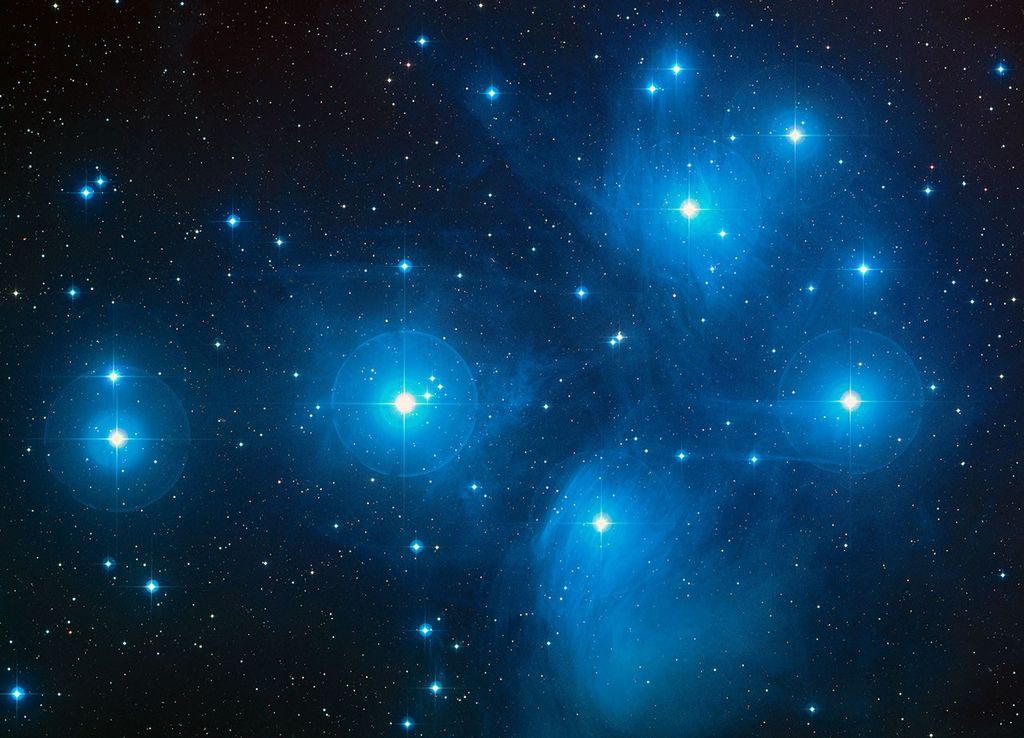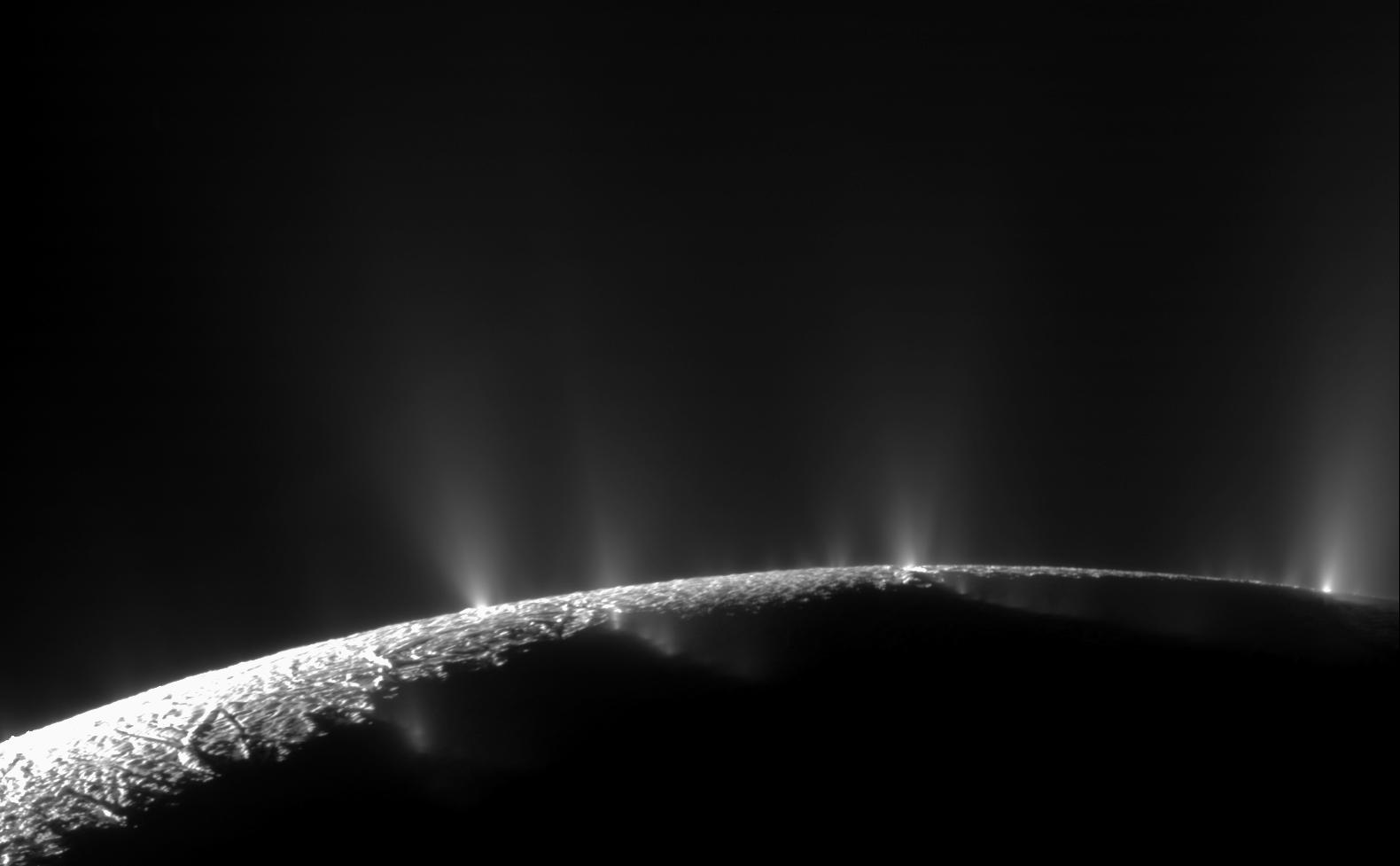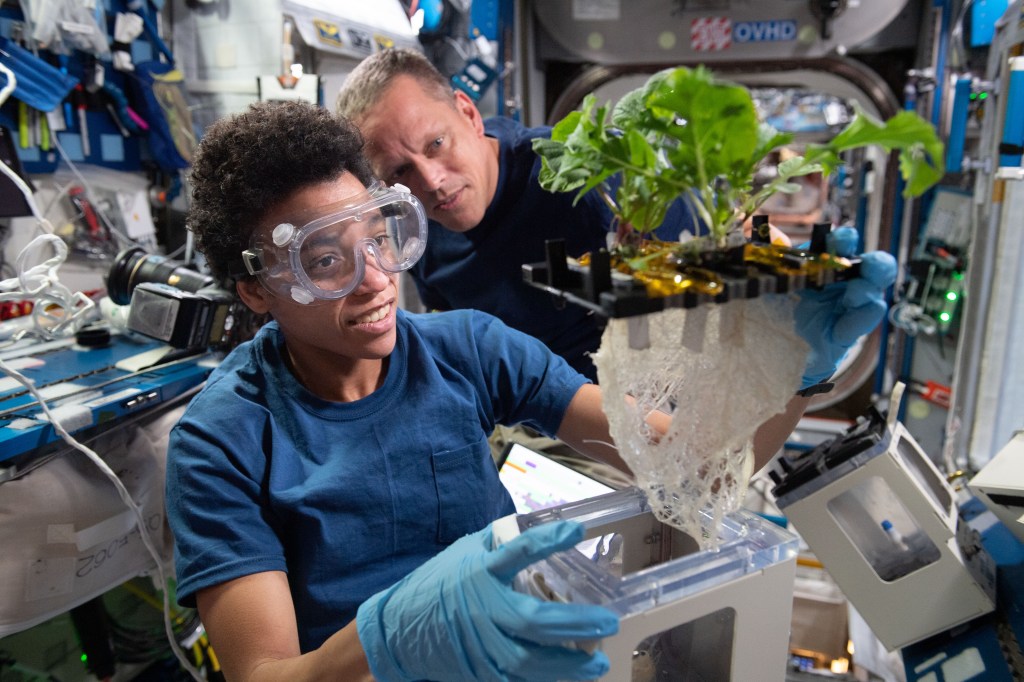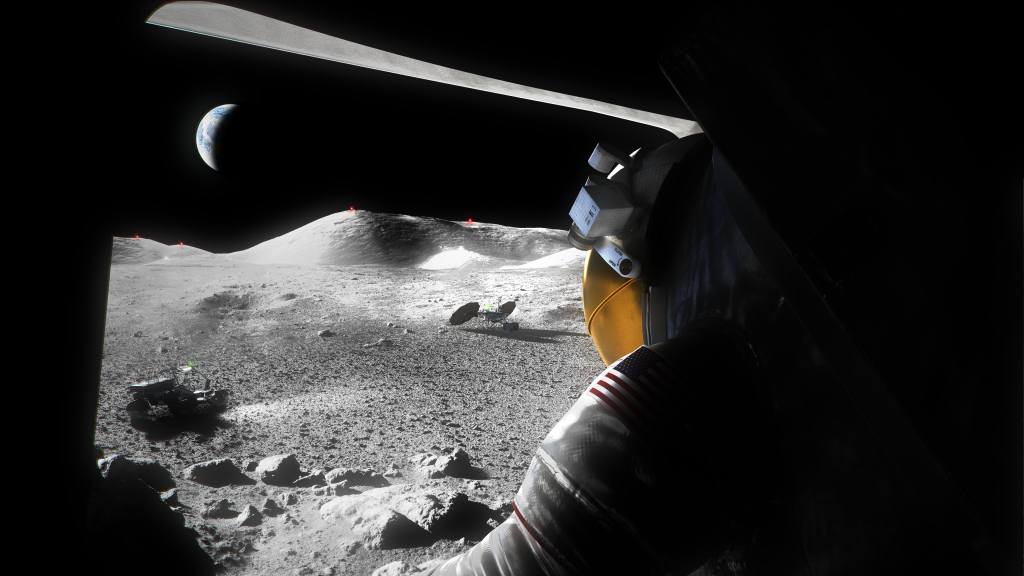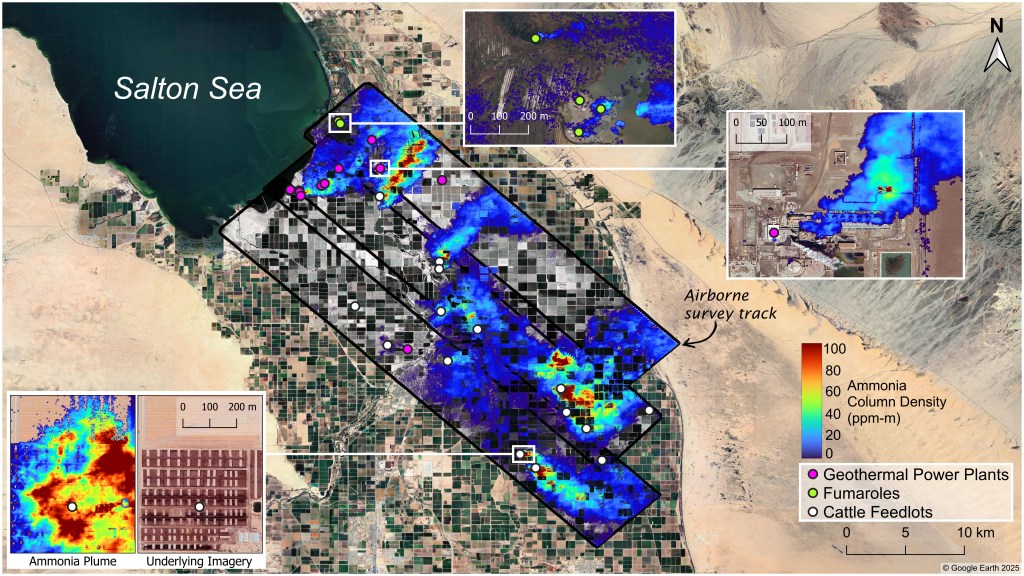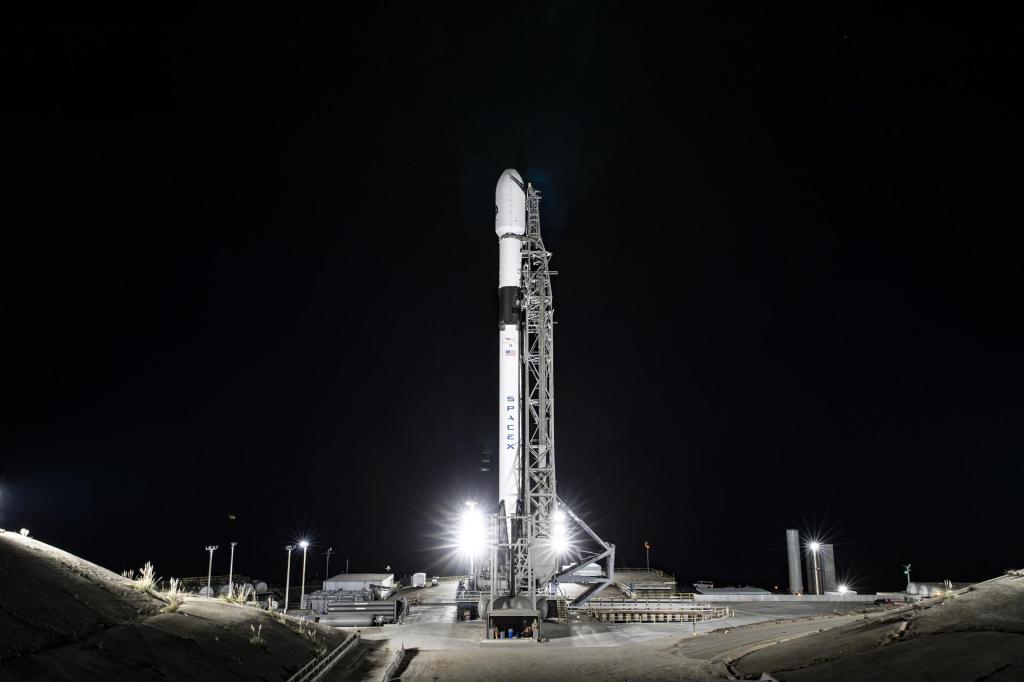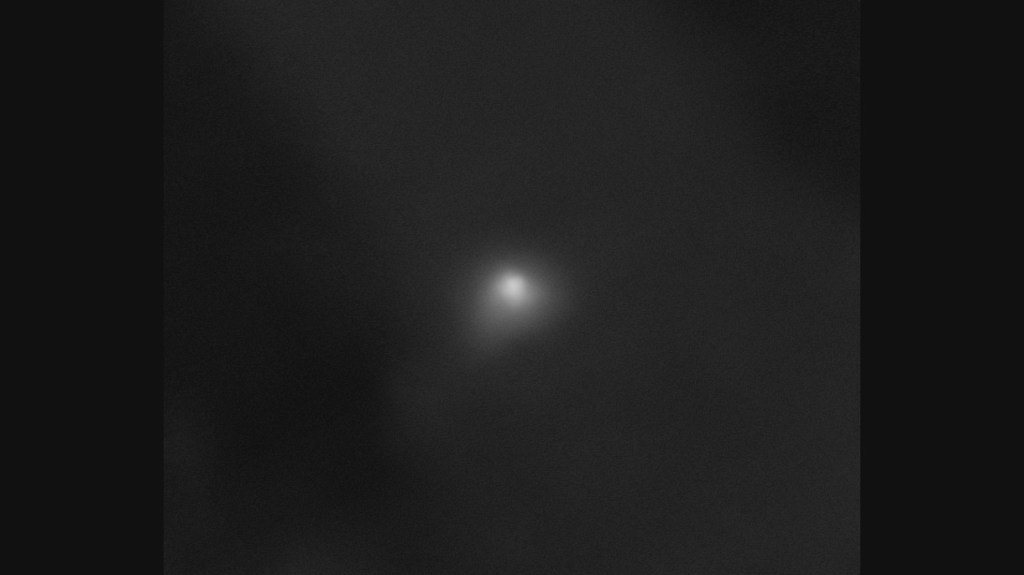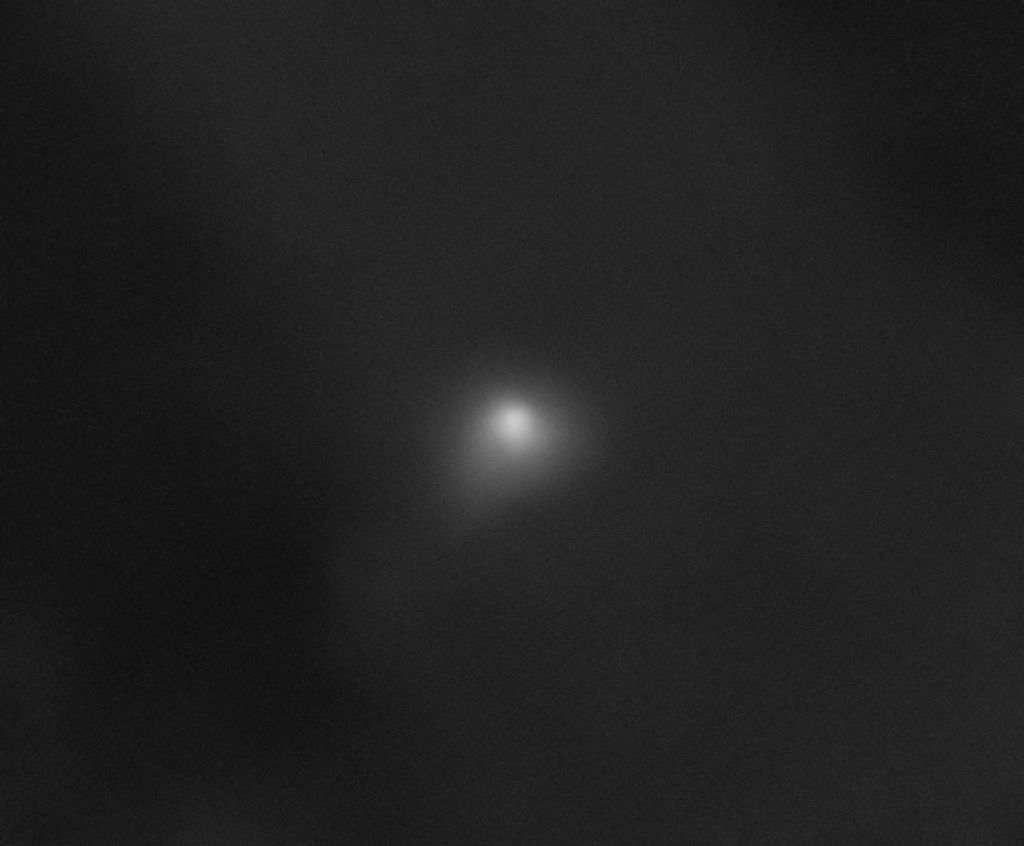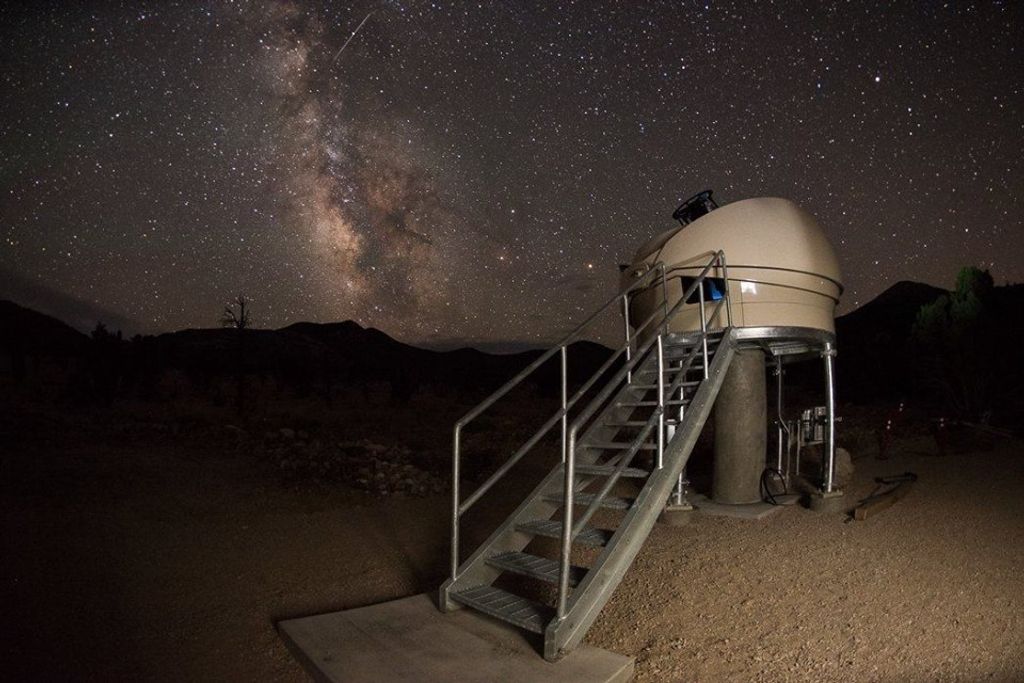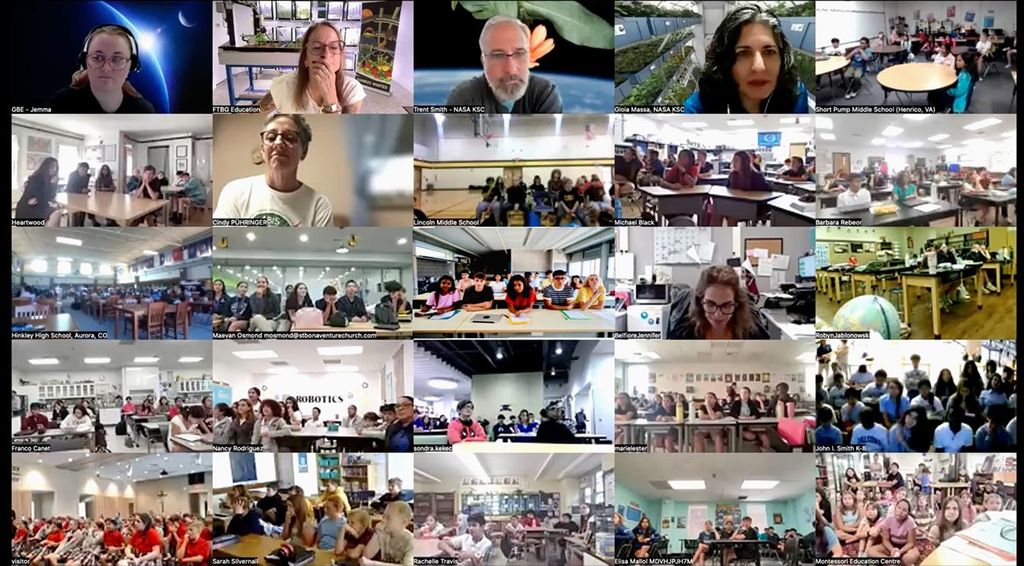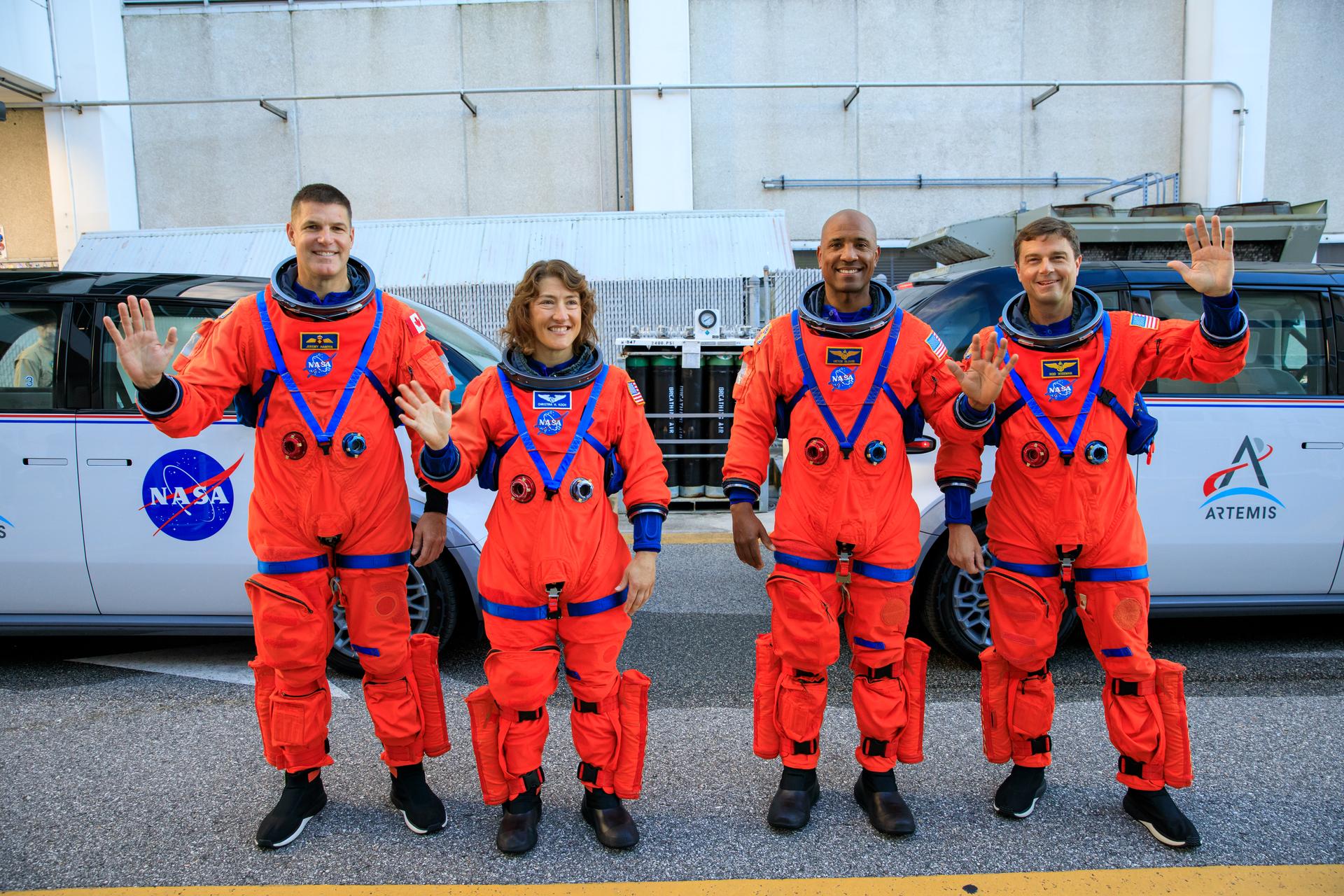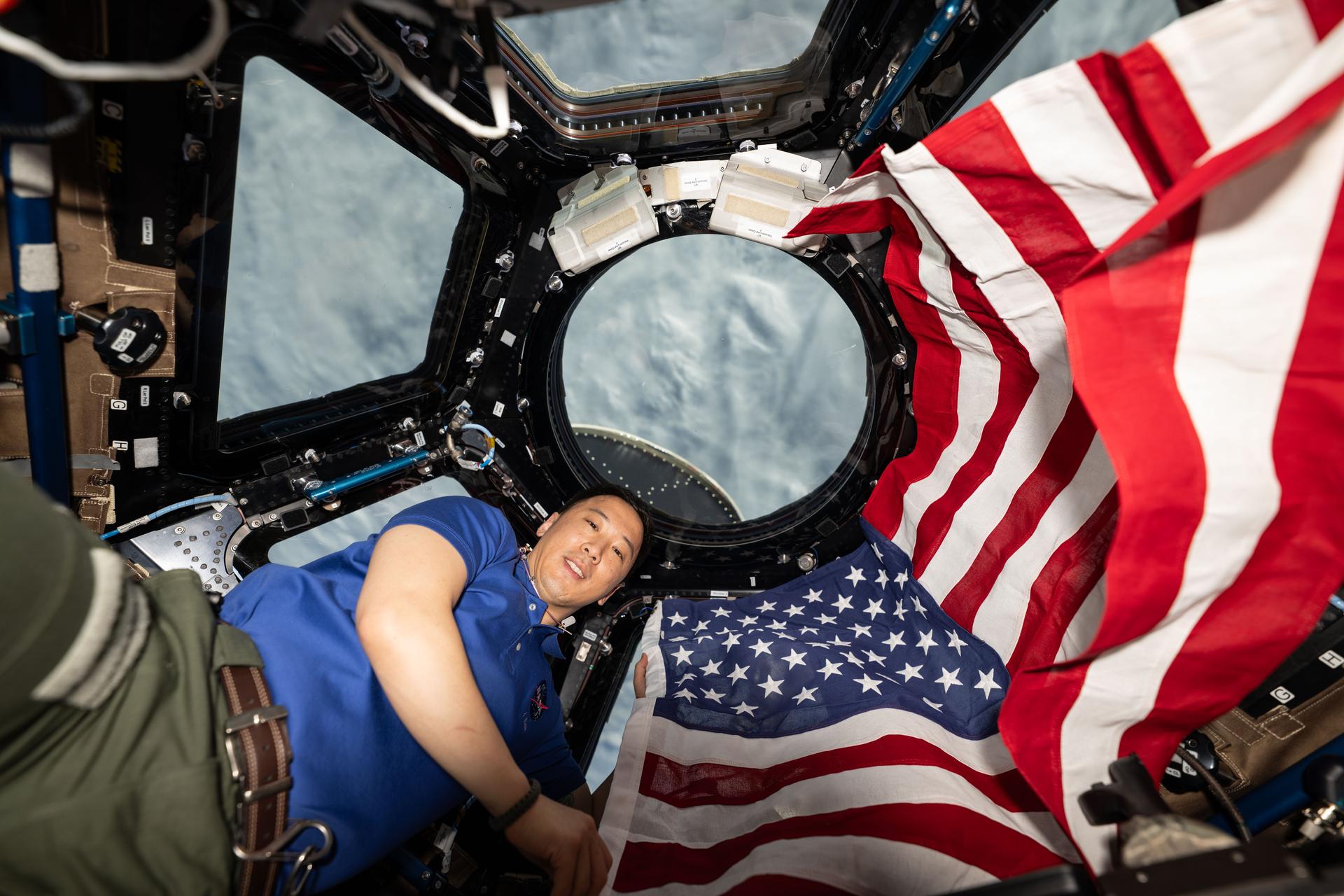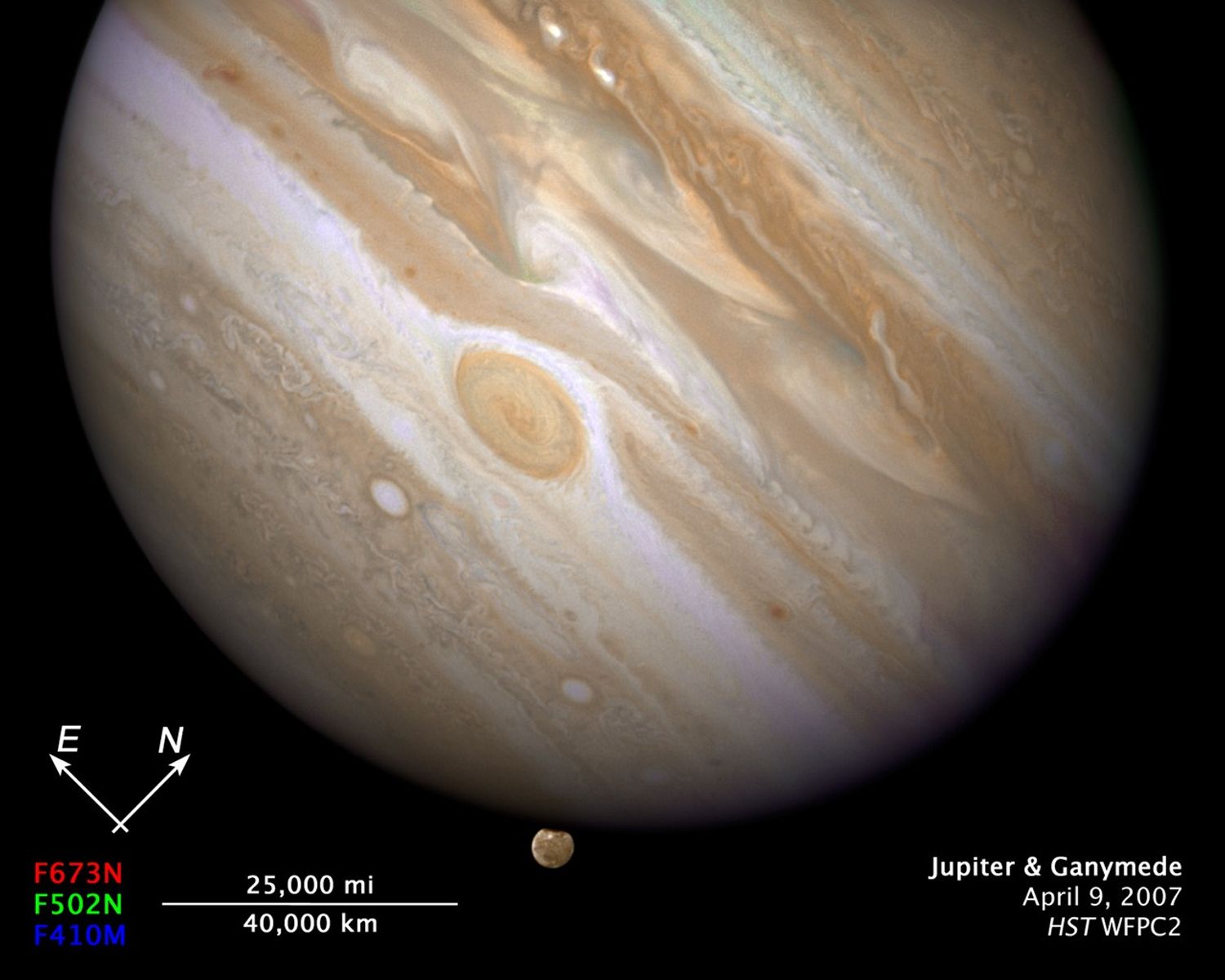1 min read
Constituent Image for Jupiter/Ganymede Compass and Scale Image

About the Object
- DistanceDistanceThe physical distance from Earth to the astronomical object. Distances within our solar system are usually measured in Astronomical Units (AU). Distances between stars are usually measured in light-years. Interstellar distances can also be measured in parsecs.The semi-major axis of Jupiter's orbit about the sun is 5.2 astronomical units (483 million miles or 778 million km).
- DimensionsDimensionsThe physical size of the object or the apparent angle it subtends on the sky.The planet has a diameter of roughly 88,789 miles (142,984 km) at the equator.
About the Data
- Data DescriptionData DescriptionProposal: A description of the observations, their scientific justification, and the links to the data available in the science archive.
Science Team: The astronomers who planned the observations and analyzed the data. "PI" refers to the Principal Investigator.The Hubble data are taken from the HST proposal 10468: E. Karkoschka (University of Arizona). - InstrumentInstrumentThe science instrument used to produce the data.HST>WFPC2
- Exposure DatesExposure DatesThe date(s) that the telescope made its observations and the total exposure time.April 9, 2007
- FiltersFiltersThe camera filters that were used in the science observations.410 nm, 502 nm, and 673 nm
- Object NameObject NameA name or catalog number that astronomers use to identify an astronomical object.Jupiter, Ganymede
- Object DescriptionObject DescriptionThe type of astronomical object.Planet with Jovian Satellite Visible
- Release DateDecember 18, 2008
- Science ReleaseHubble Catches Jupiter’s Largest Moon Going to the ‘Dark Side’
- Credit

These images are a composite of separate exposures made by the WFPC2 instrument on the Hubble Space Telescope. Three filters were used to sample various wavelength ranges. The color results from assigning different hues (colors) to each monochromatic image. In this case, the assigned colors are: Blue: 410 nm Green: 502 nm Red: 673 nm

Related Images & Videos

HST/WFPC2 Image of Jupiter and Ganymede Taken April 9, 2007
NASA's Hubble Space Telescope has caught Jupiter's moon Ganymede playing a game of "peek-a-boo." In this crisp Hubble image, Ganymede is shown just before it ducks behind the giant planet. Ganymede completes an orbit around Jupiter every seven days. Because Ganymede's orbit is...

Ganymede Disappears Behind Jupiter
This series of images taken with NASA's Hubble Space Telescope shows Jupiter's largest moon, Ganymede, disappearing behind the planet. Ganymede completes an orbit around Jupiter every seven days. Because Ganymede's orbit is tilted nearly edge-on to Earth, it routinely can be...
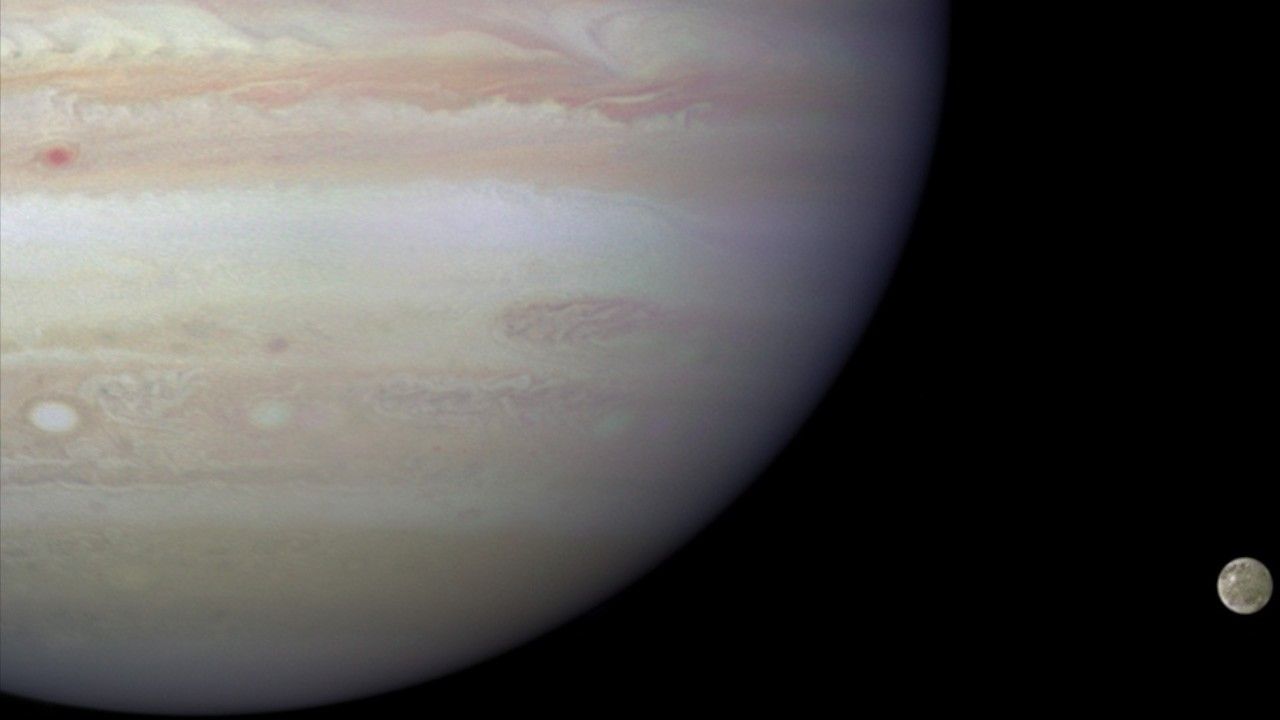
Jupiter's Largest Moon Plays a Game of 'Peek-A-Boo'
This movie shows Ganymede, Jupiter's largest moon, as it ducks behind the giant planet. Astronomers combined a series of images taken with the Wide Field Planetary Camera 2 aboard NASA's Hubble Space Telescope to make the 18-second movie. The 540 movie frames were created from...
Share
Details
Claire Andreoli
NASA’s Goddard Space Flight Center
Greenbelt, Maryland
claire.andreoli@nasa.gov

